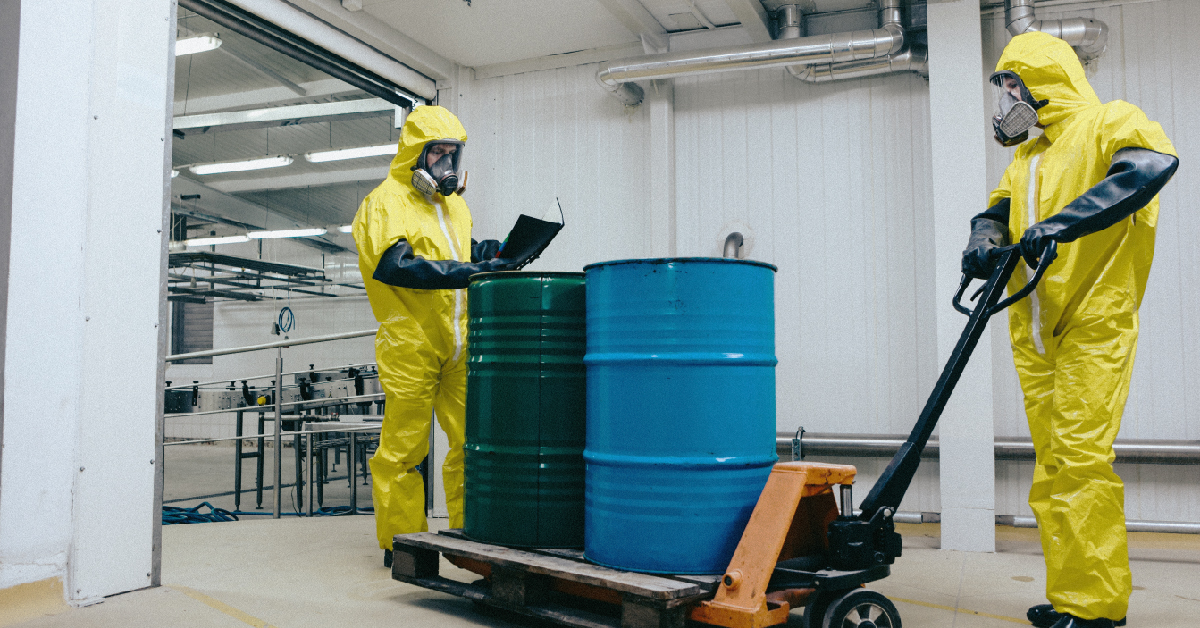Best Practices | Regulations | Safety and Regulations | Hazard Protection | Petrochemical Industry
Chemical Storage Buildings Keep Facilities Code-Compliant


This article was created for and originally published for the May/June 2023 issue of BIC Magazine. It is republished here in its entirety.
Are you properly storing flammable chemicals at your plant? Seems like a basic question for an oil, gas, or petrochemical facility, especially given the inherent blast and fire dangers associated with manufacturing facilities.
 According to the International Building Code (IBC), if a company stores more than 120 gallons of flammable liquid, class IB or IC, it exceeds the maximum quantity allowable to pose a physical hazard. The storage area is classified as an H (high hazardous) occupancy. Examples of 1B or 1C flammable liquids at your plant might include paints for maintenance or gasoline for equipment. With the H occupancy comes requirements for secondary containment to avoid spills. Factory Mutual (FM) FM6049, an approval standard for chemical storage buildings, requires a sump capacity that can contain 25% of the total storage capacity of the building.
According to the International Building Code (IBC), if a company stores more than 120 gallons of flammable liquid, class IB or IC, it exceeds the maximum quantity allowable to pose a physical hazard. The storage area is classified as an H (high hazardous) occupancy. Examples of 1B or 1C flammable liquids at your plant might include paints for maintenance or gasoline for equipment. With the H occupancy comes requirements for secondary containment to avoid spills. Factory Mutual (FM) FM6049, an approval standard for chemical storage buildings, requires a sump capacity that can contain 25% of the total storage capacity of the building.
Of course, much of the storage in a refinery or petrochemical plant will be in large, high-volume tanks, but there are applications for storage buildings such as:
- Paint storage (maintenance paints)
- Lab chemicals/lab waste
- Organic peroxides (cooling and containment)
- Pesticides, landscape chemicals
- Lithium battery storage
compliant chemical storage buildings:
What chemicals are being stored and in what quantities?
This question will ultimately determine the occupancy of the building, as mentioned above. It will also determine how big the building is and how many doors, shelves or racks are required to move the material in and out and store it efficiently. The type of material being stored may determine building materials. For example, a corrosive liquid may require a special sump liner or fiberglass components.
Are you storing only or also dispensing chemicals?
If pouring or pumping is happening in the building, it may require special ventilation or explosion vent panels because fumes can be released and could ignite. Explosion vent panels, or deflagration venting, pose additional challenges due to the clear space required in the venting direction.
How far away is the building from other occupied structures?
Distance from other occupied structures will determine if the building needs a fire rating to keep burning material inside, and to keep a possible outside structure fire outside. Compliant buildings are available with two-hour and four-hour fire ratings and are third-party tested.
What accessories are needed?
Additional accessories may be needed for fire suppression, temperature control, gas detection with alarms, mechanical ventilation, ramps, shelving and much more. In almost all cases, the interior electrical accessories are explosion-proof. The building should be properly labeled with signs or placards indicating what is being stored so firefighters know what hazards are present in the event of a fire.
Chemical storage buildings should carry Factory Mutual approval. FM has been the go-to approval organization for these buildings for decades. Other third-party approvals can ensure compliance. Even with third-party approvals and a thorough review of national codes, it is critical to review your storage plan and building design with the local authority having jurisdiction (LAHJ). They are most often the local fire marshall or a code enforcement officer. It will be up to the LAHJ to approve your storage building to ensure safe, proper, code-compliant storage.
RedGuard has provided protective buildings to oil, gas and petrochemical facilities for many years. A good first step in determining your code-compliant storage design is to contact the industry experts at RedGuard. They will review your application considering the latest versions of all relevant codes. Then, with a code-compliant quote from RedGuard, you can review the plan with your LAHJ and be well on your way to safely storing hazardous chemicals.
For more information, contact RedGuard.
Dean Alcott
Dean is the Market Development Manager for RedGuard and he has more than 25 years of experience with specialty modular structures. He has been heavily involved in transforming RedGuard from company that did business only in North America, to a global leader in the manufacture and supply of safe space.

